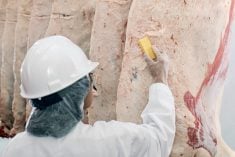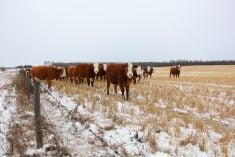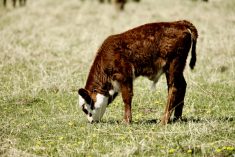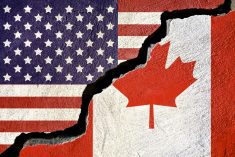When consumers think of cattle, they mostly focus on the juicy steak, roast or ground beef that comes from an animal’s carcass. That’s if they even connect these and other beef products to an animal. What they seldom if ever think of is the copious number of byproducts from that animal that find their way into thousands of other products and uses.
As I’m sure you know, one carcass produces more than 350 byproducts. The most common of these are hides and edible offal items, which include tallow, tongues, oxtails, hearts, livers and tripe. USDA calculates the value of 16 items to produce a daily byproduct value. That value is currently averaging about US$9.75 per cwt per week, which translates into US$137 per head of value. That’s why beef processors call byproducts the “fifth” quarter of the carcass, and they rely on these values to cover most of their processing costs.
Read Also

Body condition, nutrition and vaccination for brood cows
One of the remarkable events of the past century related to ranching has been the genetic evolution of brood cows….
Less common byproducts are used in the pharmaceutical and other industries, and many of them cannot be replaced by other material. The value of these items is not reported by USDA or any other entity. But it is likely that they add quite a bit more to the per head value above. One of the most valuable items, because it is so scarce, is bovine fetal blood, which comes from cull cows and fed heifers.
This blood produces serum, which is produced by separating it by centrifuge from the red blood cells in fetal bovine blood. Being scarce, serum sells for as much as US$900 per litre. The total value of serum produced in 2017 in the U.S. might have approached US$900 million. No official data exists as to how much fetal bovine blood is produced annually in the U.S. Estimates, however, suggest that production was approximately 1.6 million litres in 2015, which yielded 800,000 litres of serum. Production and yield each year after that was higher as U.S. cow slaughter was higher in 2016 and 2017 and will be higher again this year.
These increases are vital for serum manufacturers because as much as 80 per cent of all fetal bovine blood is sourced from cull cows. As many as eight to 10 per cent of all U.S. cull cows at the point of slaughter are found to be carrying a fetus. Pregnant fed heifers account for much of the other 20 per cent. But only two to four per cent of all fed heifers slaughtered are found to be carrying a fetus.
More importantly, a breakdown of fetal bovine blood supplies from cull cows reveals that an estimated 70 per cent of the blood comes from beef cows, while the other 30 per cent comes from dairy cows. The main reason for this is that beef producers often do not pregnancy-check the cows they identify for culling, while commercial dairy producers often do. Beef cows also are exposed much more to bulls for mating than dairy/milking cows so are more likely to be pregnant.
The three largest producers of fetal bovine serum in the U.S. are Thermo Fisher Scientific, HyClone GE and Sigma-Aldrich. These companies aren’t household names but the serum they produce is vital for animal and human health, as the serum is used to make animal and human vaccines. Moreover, there is no real alternative to using serum from bovine fetal blood, as I found out when I attended the annual meeting of the International Serum Industry Association (ISIA) in April. In fact, ISIA has just adopted a new marketing slogan, “Nothing works like serum.” This means bovine fetal blood will remain one of the most valuable byproducts that cattle produce.
















